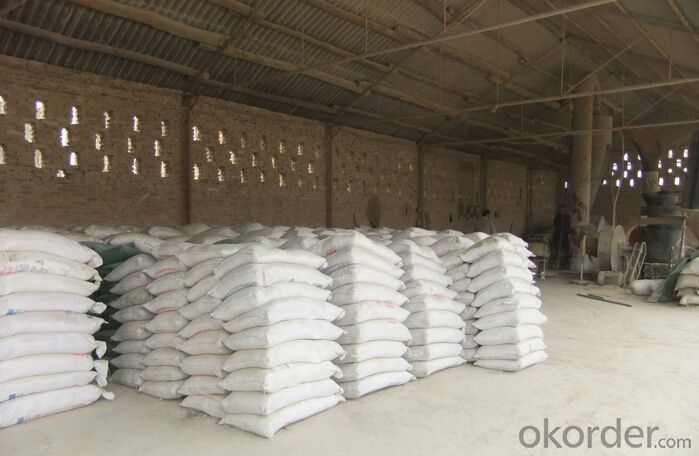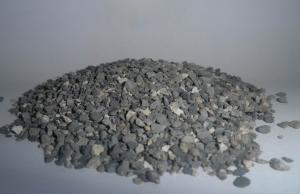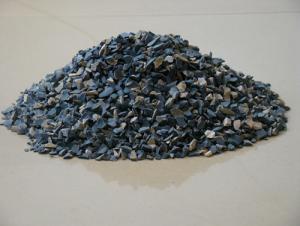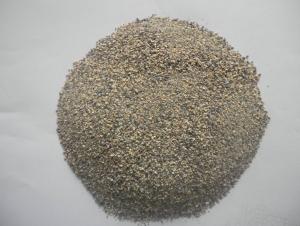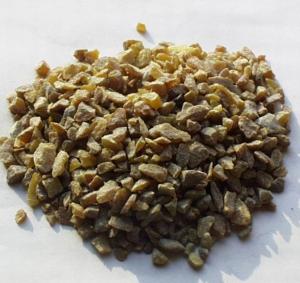Factory Direct-Sale Best Price Bauxite - Raw Materials for Refractory by CNBM in China
- Loading Port:
- Tianjin
- Payment Terms:
- TT OR LC
- Min Order Qty:
- 20000 m.t.
- Supply Capability:
- 10000000 m.t./month
OKorder Service Pledge
OKorder Financial Service
You Might Also Like
1. Structure of Calcined Bauxite Description
Bauxite Mineral Used for Aluminum Making Originated in China
Bauxite (aluminous soil; Bauxite) is also called the alumina or bauxite; main ingredients are alumina, hydrated alumina containing impurities, is an earthy mineral.
2. Main Features of the Calcined Bauxite
Bauxite Mineral Used for Aluminum Making Originated in China
Calcined bauxite is one of the principal ore of aluminum. Calcined bauxite contains hydrous aluminum oxides and aluminum hydroxides, formed through the laterization of aluminous rocks in tropical and subtropical areas .Calcined bauxite is obtained by calcining (heating)superior grade bauxite at high temperature (from 85OC to 1600C) .This removes moisture there. By increasing the alumina content,compared to an alumina content of about 57%to 58% in raw bauxite, calcined bauxite has an alumina content of 84%to88%.The heating is carried out in rotary kilns.
3. Calcined Bauxite Images
Bauxite Mineral Used for Aluminum Making Originated in China

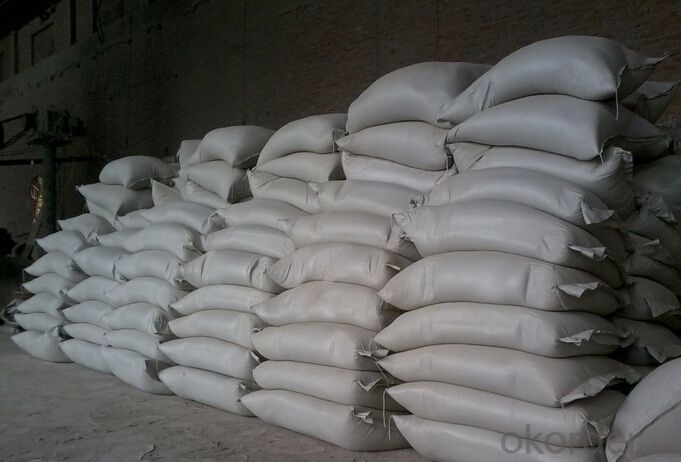
4. Calcined Bauxite Specification
Bauxite Mineral Used for Aluminum Making Originated in China
Rotary Kiln Calcined Bauxite SEMI L.F Specification : Al2O3 : 83.00 + % Fe2O3 : 3.5 % SIO2 : 5 To 6% Cao : 2.5% TIO2 : 4 % , Size : 0-1MM OR 1-3MM
Rotary Kiln Calcined Bauxite G.G.NO.1 Specification : Al2O3 : 80.00 + % Fe2O3 : 3.8 % SIO2 : 6 To 8% Cao : 2.2 To 2.5% TIO2 : 5 To 6 % , 0-1MM OR 1-3MM
Rotary Kiln Calcined Bauxite G.G No.2 Specification : Al2O3 : 78 % Fe2O3 : 4 TO 4.2% SIO2 : 8 To 9 % TIO2 : 6.00 % Cao : 2.50 % , Size : 0-1MM OR 1-3MM
Rotary Kiln Calcined Bauxite G.G No.3 Specification : Al2O3 : 75 % Fe2O3 : 4 TO 4.5% SIO2 : 9 To 11 % TIO2 : 5.00 % Cao : 3.00 % Size : 0-1MM OR 1-3MM
Or as per buyes requirements.
5.FAQ of Calcined Bauxite
Bauxite Mineral Used for Aluminum Making Originated in China
1). Q: Are you a factory or trading company?
A: We are a factory.
2). Q: Where is your factory located? How can I visit there?
A: Our factory is located in ShanXi, HeNan, China. You are warmly welcomed to visit us!
3). Q: How can I get some samples?
A: Please connect me for samples
4). Q: Can the price be cheaper?
A: Of course, you will be offered a good discount for big amount.
- Q: Can anyone tell me what material the first rate fire resistant door is?
- Material of Class A fire doors mainly are steel, wood, steel and wood, and other materials. Fire door is one of the measures of the building fire separation, usually used on the firewall, entrance and exit of staircase or tube well openings, which is required to hane the abilities of smoke insulation and fire insulation. Fire door plays an important role in prevention of the spread of smoke and fire and the reduction of fire loss. Therefore, we must have strict requirements. Fire doors are divided into class A, class B and class C, whose properties of fire-resistant thermal insulation and fire-resistant integrity should be no less than the following values: Class A should be1.50h; class B should be1.0h; Class C should be 0.5h. - stipulations in article 4.5.1.2 in "The New Standard of Fire Doors" GB12955-2008. I hope my answer can help you. Thank you.
- Q: What are the applications of refractory busway?
- Is an ieal power supply equipment for modern large and medium-sized enterprises, high buildings, the introduced projects, experimental base and other places.
- Q: How to count the construction costs of refractories?
- In winter, the temperature of the the fire-resistant masonry, fire-resistant plastic, sodium silicate, phosphoric?acid castable should be maintained above 5 ℃. Usually greenhouses in which heating facilities are installed to maintain the appropriate temperaturere for the construction environment should be erected in refractory masonry. The temperature around the construction site of the industrial furnace and refractory masonry shall not be lower than 5 ℃.
- Q: What do we mean by saying that a ladle cover knots, elbow knots, blowpipe knots in refractory materials? What is the “knot”?
- Go eastward 200 meters from the south gate of cultural square.
- Q: Which refractory quality inspection authority is good?
- Download refractory quality inspection LIRR in Henan is nationally recognized. Of course, it is an authority, but the cost is very high.
- Q: What's the organzational structure of refractory material?
- Although hacing same chemical composition refractory material products also is mineral organizer. There are differences in the type of mineral phase, high refractoriness under load, quantity and crystalline state. The organizing minerals and microstructure are reflected by folding strength, high temperature pit definite density torsional strength, high-temperature torsional strength and product property. But, for example, wear or crack may cause damage. The performance index can reflect the internal structure of refractory: the nature of the thermal performance---linear expansion coeffcient. And the mineral composition of refractory material depends on the chemical composition and process conditions, the heat capacity and temperature conductivity. If the processing conditions are different, the influence of chemical action, and thermal conductivity: represents the nature of the mechanical properties - normal temperature, high temperature compression strength, high temperature creep performance and elastic modulus. Chemical compositions are the basic characteristics of refractory, representing the nature of the density---porosity, corrosion occurred refractory materials in high temperature use As a result, the composition and quantity directly determines the performance of refractory, true density: representing the forming of high temperature performance --- refractoriness, high temperature volume stability, so you can't analyze the effect on the product performance just from chemical composition. The performance of various refractory materials are different. It must be emphasized that macroscopic organization structure of refractory material is also an important factor that affects performance; reflecting complexity of penetration---air permeability, thermal shock resistance and slag resistance. The main component is the foundation of refractory characteristics.
- Q: What's the refractoriness and how to measure the refractoriness?
- Bottom each side length is 8 mm and upper side length is 2 mm. Under a certain temperature-rising speed, when heating, refractory's resistance to high temperature from melting is called refractoriness. The properties of cross section into an equilateral triangle and height is 30 mm. When it bends down until the vertex and chassis contact temperature is the refractoriness of sample. It bends due to the influence of its weight. Make the will-measured material into standard pyrometric cone.
- Q: who knows how to classify the fire resistant levels of fireproofing material?
- Materials used in construction are called construction materials. The combustion performance of construction materials refers to all physic and chemical changes happened when burning or contacting fire, the properity is measured by combustibility of material surface and flame transmission, heating, smoke,charring, weightlessness, and the producing of toxicity resultant. Our national standard GB8624-97 classifies the combustion performance of construction materials into following several levels. Class A: Incombustible building material, class B1: Nonflammable building material, class B2: Combustible?building?materials, class B3: Inflammability construction materials, generally speaking: first fire resistant level construction is the mixed construction of reinforced concrete structure or brick wall and steel concrete structure; second fire resistant level construction is the steel structure roof truss, reinforced concrete column or mixed structure made by brick wall; third fire resistant level construction is the wood and brick made by wooden roof and brick wall; fourth fire resistant level one is the combustible?structure made by wooden roof, hard-comnustible component wall.
- Q: Does anyone know about the fire resistance period of thin fireproof coatings?
- Outdoor thin steelwork fireproof coatings have a fire resistance of 2.0 hours, the thickness of coatings is between 4.5 to 5 mm, the standard amount is 5.5 to 6kg per square meter. Specific situations vary according to the thickness data provided by manufacturers . The fireproof coatings are applicable for the surface of combustible substrates, which can reduce the flammability of the surface being painted, and block the rapid spread of fire. They can be used to improve the fire resistance of the materials being painted. The fireproof coatings are coated on the substrate surfaces. They are also rustproof, waterproof, wearproof, heatproof and anticorrosive apart from flame retardant. They have good tenacity, stainability, adhesiveness, glossiness and fast-drying nature.
- Q: What's the material of electrical fire prevention board?
- Industrial electrical fire prevention board is mainly aimed at fire protection and thermal insulation. Iron plate is electrically conductive with good thermal conductivity, which will cause the result that the equipment is not insulated and suffers larger superheating surface! ! ! !
Send your message to us
Factory Direct-Sale Best Price Bauxite - Raw Materials for Refractory by CNBM in China
- Loading Port:
- Tianjin
- Payment Terms:
- TT OR LC
- Min Order Qty:
- 20000 m.t.
- Supply Capability:
- 10000000 m.t./month
OKorder Service Pledge
OKorder Financial Service
Similar products
Hot products
Hot Searches
Related keywords



